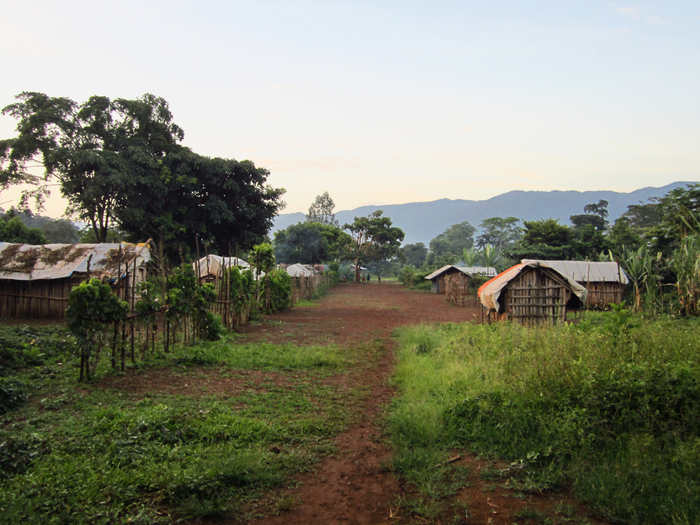The old stuck to old ways, much like organic farmers and believers in alternative medicine do, while the young embraced progress as the elders died off.
A new study of peoples living in the highlands of southwest Ethiopia, where the transition to agriculture is still underway thousands of years after it began, shows that isn't the case now. Researchers collected DNA samples from five groups of people in the southwest highlands: the hunter-gatherer Chabu; the Majang, who practice small-scale cultivation of crops; and the Shekkacho, Bench and Sheko, who practice more intensive farming.

A Chabu village in the Sheka forest of southwest Ethiopia. Credit: Zachary H. Garfield, Washington State University
Based on genetics they estimated the effective population size over the past 60 generations, or about 2,000 years, to assess both the genetic ancestry of the different groups and demographic trends in the recent past.
The new analysis shows that the Chabu, the last hunter-gatherers in the area and considered a subgroup of the Majang, are related to a hunter-gatherer ancestor who lived in the area about 4,500 years ago. Contrary to expectations based on the European Neolithic transition, the other agricultural groups in the study also have a majority genetic affinity with these hunter-gatherer ancestors, though they differ in their other ancestries. The Majang have genetic input from Nilo-Saharan speaking agriculturalists. The Bench and Sheko, in contrast, have contributions from East African Afro-Asiatic agricultural ancestors — from whom the Shekkacho are mainly descended.
The population size estimates show that the Chabu have been declining over the past 2,000 years. That is often the case for hunter-gatherer groups during an agricultural transition.
“What’s really interesting here is that we have groups in this study from the same area who have transitioned to agriculture at different times, with the Chabu in transition right now,” says Justin Myrick, a staff researcher at the UC Davis Genome Center. “What we see is a lot of variation in response to agriculture. The Chabu and Majang’s population sizes have been declining, though the Bench and Sheko have not despite all of them having majority indigenous hunter-gatherer ancestry.”





Comments